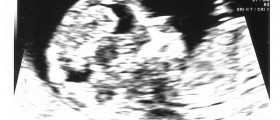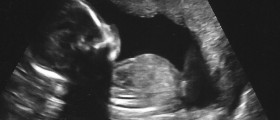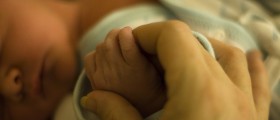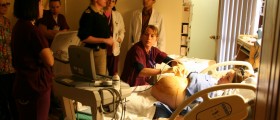
Whether you are aware or not, you probably already have all the information you need to work out what position your little one is in. So, how does this work? Midwives can feel your baby's position by exploring the outside of your pregnant belly, but so can you. Gail Tully developed a technique called belly mapping, which you can read more about on her Spinning Babies website. Dividing your belly into four quarters (like on a clock), it becomes easier to make sense of the position your baby is in. Perhaps, you have felt a hard and ball-like part in in the bottom left quarter. This is your baby's head. Have you felt your baby having hiccups (see heavy fetal movement and hiccups)? Where in your belly did you notice the sensation? Where do you feel the strongest kicks? Do you feel a squishy, large bulge? That is likely to be your baby's bum.
With baby mapping, the key is writing down what you feel, and then the position will become clear. If this sounds like something that is difficult to carry out, just give it a go. If you have an idea about where the head and legs are, you can more easily conclude where the rest of the body parts are. If it is too abstract for you, try positioning a baby doll on your belly, with its body parts matching those of your baby. The "missing pieces" will soon be filled in. The third trimester, and specifically the last two months of pregnancy, are the best for baby mapping. Does this sound difficult to you? Just give it a go, and you might just get some wonderful insight into exactly how your baby is positioned. It can be a lot of fun!
















Your thoughts on this
Loading...